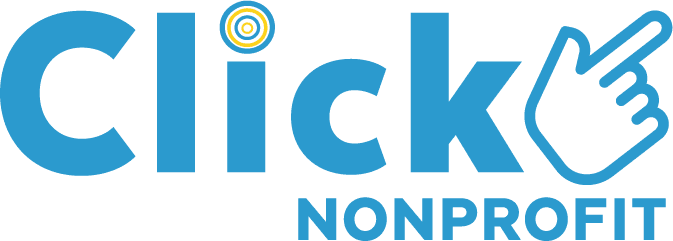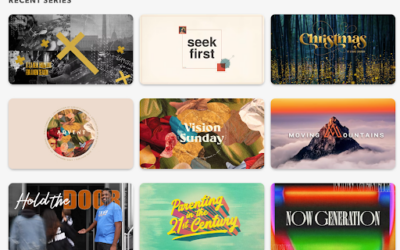In today’s world, internet users have more information than they know what to do with. Every product they could ever buy, every cause they could ever support – it’s all a quick search away. But with an overwhelming number of choices, how can they be sure they’re finding the right website? And as a marketer within your own organization, how can you be sure the right users have access to you? After all, 95% of website clicks occur on the first page of Google Search results; if your organization doesn’t rank until the second or third page, you may never have the chance to build your audience.
This is where search engine optimization (SEO) comes in. While optimizing your site to be found by users requires significant time and energy, it is undoubtedly a rewarding process. And one of the most exciting ways that organizations can improve their Google ranking is through blog writing. Demand Metric found that companies that actively blog saw 67% more leads than comparable organizations that don’t. Blogging provides a way to establish your organization as a trusted advisor in your industry and to educate readers on your offerings and on issues relevant to your community.
If you feel that blogging is a viable choice for your organization, or if you’ve already begun a blog but want to ensure you’re making the most of it, read through the following SEO best practices for blog writing. In this post we will cover the importance of keyword research, quality textual and visual content, link building, and technical setup in optimizing your blog for search engines.
Keyword Research
The first step in developing your SEO blog-writing strategy is performing keyword research. By doing so, you can identify what users are searching for and what they intend to do with the information they find. User search intent typically falls under one of four categories: informational, navigational, commercial, or transactional.
Informational searches help users to learn more about a topic. What is the Bible about? is an example of such a search. Navigational searches, generally some variation of an organization’s name or website URL, occur when users are trying to find a specific webpage. When considering an action but wanting to compare several options, users enter commercial searches like best places to volunteer near me. And transactional searches – such as online donation to earthquake relief – are the queries used to make a final purchase or decision. Performing keyword research surrounding your industry’s terms can help determine not only most common searches, but user intent; both will shape your content strategy.

There are a number of excellent keyword research tools at your disposal, including Moz Keyword Explorer, UberSuggest, and Google Keyword Planner. When performing research, pay attention not only to the volume of keywords – how often they are entered – but to the difficulty of keywords – how much competition surrounds the search term. In general, it’s an SEO best practice to target keywords that boast high volume and low difficulty.
As you peruse potential keywords, consider the blog posts that you might build around each of them. Look for the intersection between user interests and needs that your organization can meet. Do you run an animal rescue shelter? Consider writing about the benefits of shelter versus breeder adoption. Or, provide an easy-to-digest guide on picking the most compatible breed for one’s family. Being aware of areas of unmet needs in the market can help you set yourself apart from competitors. Consumers only have so much attention; it’s vital that you provide unique resources to satisfy their requests.
A final note: Most SEO experts say that the ideal blog post targets 2-5 keywords; these keywords must be closely related to each other and to the blog’s overall message. Don’t try to cover too wide a range of topics in one post – keep it specific and detailed. It’s best to mention your keyword variations multiple times throughout the post. However, be wary of cramming too many into each paragraph, resulting in an unnatural read. Remember that you are trying to meet the needs of actual people; artificially adding unnecessary keywords will only distract and frustrate readers.
Textual Content
Google’s algorithm is constantly updating to provide more relevant, helpful content for users. Trying to “beat the system” with keyword stuffing or misleading content doesn’t help brands in the long run and can barely help them in the short run. Google’s algorithm is too smart for this. Thus, we write for people, not for bots.
Relevant Content
Think about a time when you found a site’s information helpful. It was likely easy to read, clear, concise; it answered your question adequately and might even have included links to further information. What about a time when you became too frustrated with a site to stay and read the article – or worse, when you clicked off the page almost immediately? Chances are, the information was unhelpful. Maybe the article didn’t actually answer the question you asked, or it buried the information deep in heavy paragraphs. The truth is, as consumers, we do not like to wait. If we have to work too hard for the answer, we will simply find someone else to ask. And that someone will probably have an SEO-friendly blog post ready to go.
Relevant, engaging material will always beat out black-hat tactics like the practice of keyword stuffing. After doing all your research and finding the perfect keywords, you may find yourself tempted to write something like this:
Welcome to ABC Animal Rescue Shelter in Nashville, Tennessee. We are a rescue shelter for domestic animals located in Nashville, Tennessee. Here at ABC Animal Rescue Shelter in Nashville, we believe the goal of every animal shelter is to rescue Nashville animals in need and to give them a home. We want to serve the Nashville area by providing animals with shelter and by finding them loving families in Nashville, Tennessee. Stop by ABC Animal Rescue Shelter in Nashville and rescue the newest member of your family today!
Okay, that may be a bit of an exaggeration, but you see the point. By stuffing the keywords rescue, animal shelter, and Nashville into this paragraph, this marketer may feel as though her site cannot help but rank for these words – she’s beat the algorithm! But no human would ever want to sit and read copy like that. So, if a user does come to this website, they likely won’t stay for long. Google also recognizes such practices as illegitimate and not helpful to users. Thus, while it’s important to organically include keywords in your posts, remember that keywords are simply a tool to help your site rank, and not your end goal.
Consistent Content
When it comes to SEO blog writing, consistency is key. Your site will be more likely to rank if it continually offers new content. This doesn’t mean that you have to publish a new post every day; we are looking for quality over quantity. Writing a high-quality article once a month will be significantly more helpful than sporadically posting three times in a week followed by a six-month dry spell. A consistent posting schedule triggers Google (and other search engines) to crawl and index your site regularly. This will help your website to become more authoritative over time.

Ultimately, each organization is unique in terms of resource allocation to blogging, industry-relevant topics, and competition. Thus, you must set realistic standards that are appropriate for your organization’s abilities and goals.
Topics for your blog content may come from a variety of sources. Keyword research locates areas of user interest and serves as a great launch point for content. But you may also choose to write about your organization’s goals – both past and future – or upcoming events. In each post, be conscious of openings in which you can invite users to partner with you in the work of your organization. Teach them about the work you do and the impact you have, and offer ways for them to get involved.
Visual Content
Providing quality content does not refer only to textual information; adding SEO-friendly visuals is key. Participants in one study were able to recall only 10% of written information after three days; that number jumped to 65% when recalling visual content. Additionally, blogs that include query-relevant visuals gain 94% more views than text-only blogs. The significance of high-quality photos, videos, and infographics in optimizing your blog for search engines cannot be understated.

However, there still remains a visual component to text-only blogs. Our brains process information more easily when divided into small chunks. One massive paragraph becomes much more appealing when broken down into several bite-sized pieces. Especially when reading from a mobile device!
Additionally, users looking for specific answers to their questions prefer to skim information for anything relevant; this is more efficiently done with well-organized information. One easy way to make your posts more readable is simply to utilize white space. Making use of bullet points, shorter paragraphs, clear headings and subheadings, and pull quotes can make information less overwhelming and more enticing. Being intentional about white space and visual media can drastically affect the readability of your blog and user experience. This will directly impact the SEO of your blog post, as Google places a large emphasis on readability and user experience.
Link Building
Building a system of links to and from your blog is an SEO best practice for a reason – it is an excellent way to increase the credibility and authority of your blog. This can be done through the use of backlinks (or inbound links), external links, and internal links.

Backlinks
Backlinks are the result of growing influence in your community. When you provide information that is helpful to your audience, more appreciative members may choose to share your blog as a source in posts of their own. By crediting your information and linking back to your site, they direct traffic to your post and increase your website’s authority.
Having backlinks from other authoritative websites is one of the biggest ranking factors in SEO. To get more backlinks, focus on creating helpful, quality content. You can also reach out directly to websites in your industry and request that they link to your relevant blog post.
External Links
In the reverse, you can also include external links in your blog. By linking to outside articles that you consider valuable, you demonstrate to your readers that you’ve gathered knowledge from credible sources and that you are credible yourself. You care about your audience and want to help them find the answers to their questions, whether through your site or another.
Internal Links
If you’ve published more than one post that is relevant for a user’s search term, you can use internal linking to direct readers from one post to the next. Users reading your article on Top Ten Mission Trips for Youth may also be interested in your piece on Mission Trip Packing List. Placing a link to the second article within the body of the first can drive traffic from one to the other, providing users with a deeper understanding of the information they seek and a greater picture of what your organization offers.
Technical Setup
On the technical side of SEO for blog writing, minute changes can have a significant impact on your site’s ability to rank. The copy in your title tag, meta descriptions, URL, header tags, and alt text should be clear, engaging, and keyword-rich (but remember, no keyword stuffing). By optimizing each of these, you are making Google’s job easier.

Google Search queries are heavily mobile, which means that many of your users will be reading your blog from their phones. Thus, it’s vital that your site is mobile-friendly, meaning that every relevant page, icon, and image is accessible and visually appealing when on a mobile device. Many sites such as WordPress have themes and plugins that optimize for mobile, so you don’t have to do the heavy lifting yourself. But there are ways to optimize your site manually, such as implementing AMP and schema markup. Whatever method you choose, it is vital to optimize your blog for mobile users.
Conclusion
These SEO best practices for blog writing can be boiled down into a handful of tips:
- Quality is key. We write for people, not bots.
- Use keyword research to shape your strategy.
- Visual content and white space capture attention and increase retention.
- Provide additional relevant information using inbound, external, and internal linking strategies.
- Optimize for the technical side of SEO. Once it’s readable for humans, optimize it for Google.
Lastly, stay true to your brand! Write about what your audience is interested in, what your organization believes in, what this world needs to hear. You know best the importance of your organization’s mission – now is the time to expand your influence! Search engine optimization as it relates to web development, ecommerce, and blogging is constantly evolving; there is no better time to get started than right now.




